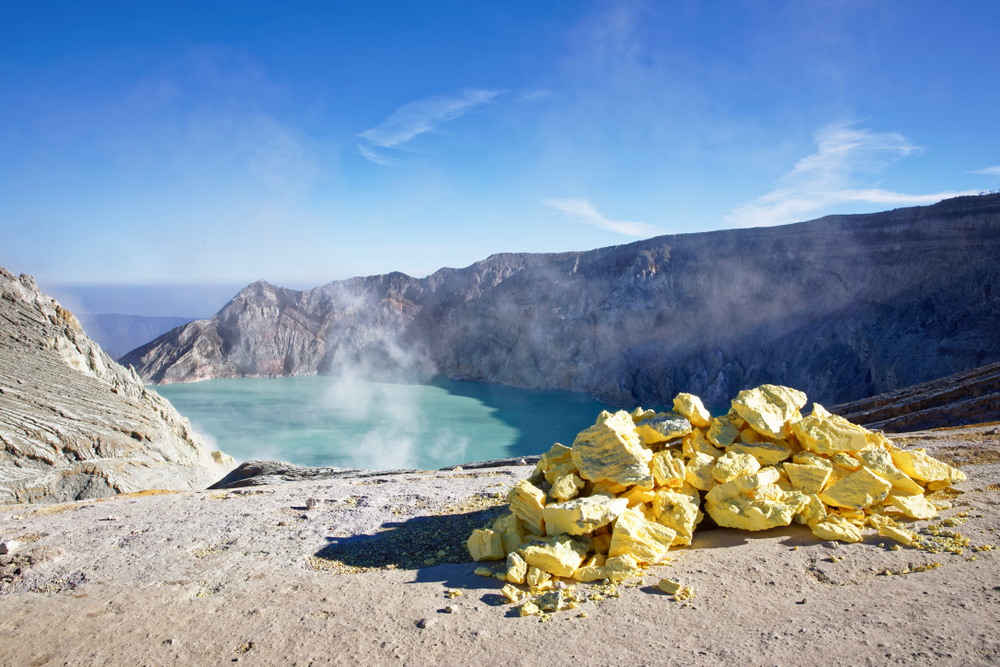In eastern Java, Indonesia lies the Kawah Ijen volcano, which has become something of a tourist hotspot in recent years. This is because, at night, otherworldly blue lights appear on its darkened slopes. These ghostly pale fires are caused by the large amounts of sulfur deposits on the volcano’s surface. When the high temperatures from inside the volcano heat these sulfur deposits, they combust into blue flame.
But as impressive and mysterious as these displays may be, they do conceal a darker aspect concerning this volcano, one related to the humans who mine its resources. These miners work in dangerous and precarious conditions to get at the sulfur, or what they call “Devil’s gold”.
Sulfur is an important natural resource and humans have been fascinated with it for centuries. Today, it is used in an array of products and industries across the world. We use it in our sugar, our matches, and our batteries, but sulfur’s various compounds are also integral to the production chemicals in fertilizers and medicines. It is also an essential ingredient in rubber products, fireworks, gunpowder and so on. And this is big business too. Compared to other jobs available on the island, sulfur mining pays pretty well, making it an appealing job for workers.
However, it is also a very dangerous job; not only is it physically demanding, often requiring back-breaking efforts to mine, but it is also extremely toxic for the workers.
The sulfur gas is extracted from inside the volcano by way of metal pipes that bleed it from the interior. Once on the surface, the gas condenses into a liquid and, as it cools, it hardens into yellow slabs that are then broken apart by hand and placed in wicker baskets. These baskets are then put either side of a pole and carried back up the face of the crater across the miner’s shoulders.

Kawah Ijen is one of the last places on Earth where sulfur is mined in this way.
Image credit: Jerome LABOUYRIE/Shutterstock.com
Anyone who has done hard labor will know that carrying heavy loads like this over and over again can have severe implications for your health, but in this instance the miners are usually carrying loads that are heavier than they are (around 68-90 kilograms, or 150-200 pounds). As such, the gruelling and precarious journey back up the crater comes with a painful toll, giving most workers an average life expectancy that rarely exceed 50 years, as well as producing spinal injuries and disfigured backs.
In addition to the challenges of carrying these yellow rocks is the fact that the air at the base of the crater is also filled with toxic sulfur dioxide fumes. In most instances the miners work without suitable protection, so they are breathing in this gas that burns their lungs and causes their eyes to constantly water. In high enough concentrations, sulfur dioxide can lead to respiratory problems and even acute pulmonary edema.
The mining communities on Java are among the last on the planet. In most instances, sulfur is extracted from petroleum, natural gas, and other fossil resources (where it is obtained in the form of hydrogen sulfide). The sulfur industry is estimated to be worth about US$13 billion and is expected to grow in the coming years.
Mined sulfur is not as pure as that refined through the above processes, so it does not fetch as much of a price either. But despite these issues, the industry on Java remains an important but treacherous option for those who cannot find work elsewhere.
Source Link: What Is Devil’s Gold And Why Is It So Dangerous?